When last we met, I introduced you to my new Confidette bolero knitting pattern (available on Ravelry and Payhip). One of my favorite elements about Confidette is the shaded garter stitch border and cuffs, which we’ll look at more today. And I’m going to share a quick tutorial on Icelandic bind, which finished them off perfectly!
The blue sample bolero was knit in John Arbon Knit by Numbers DK, and the blues are two shades apart.
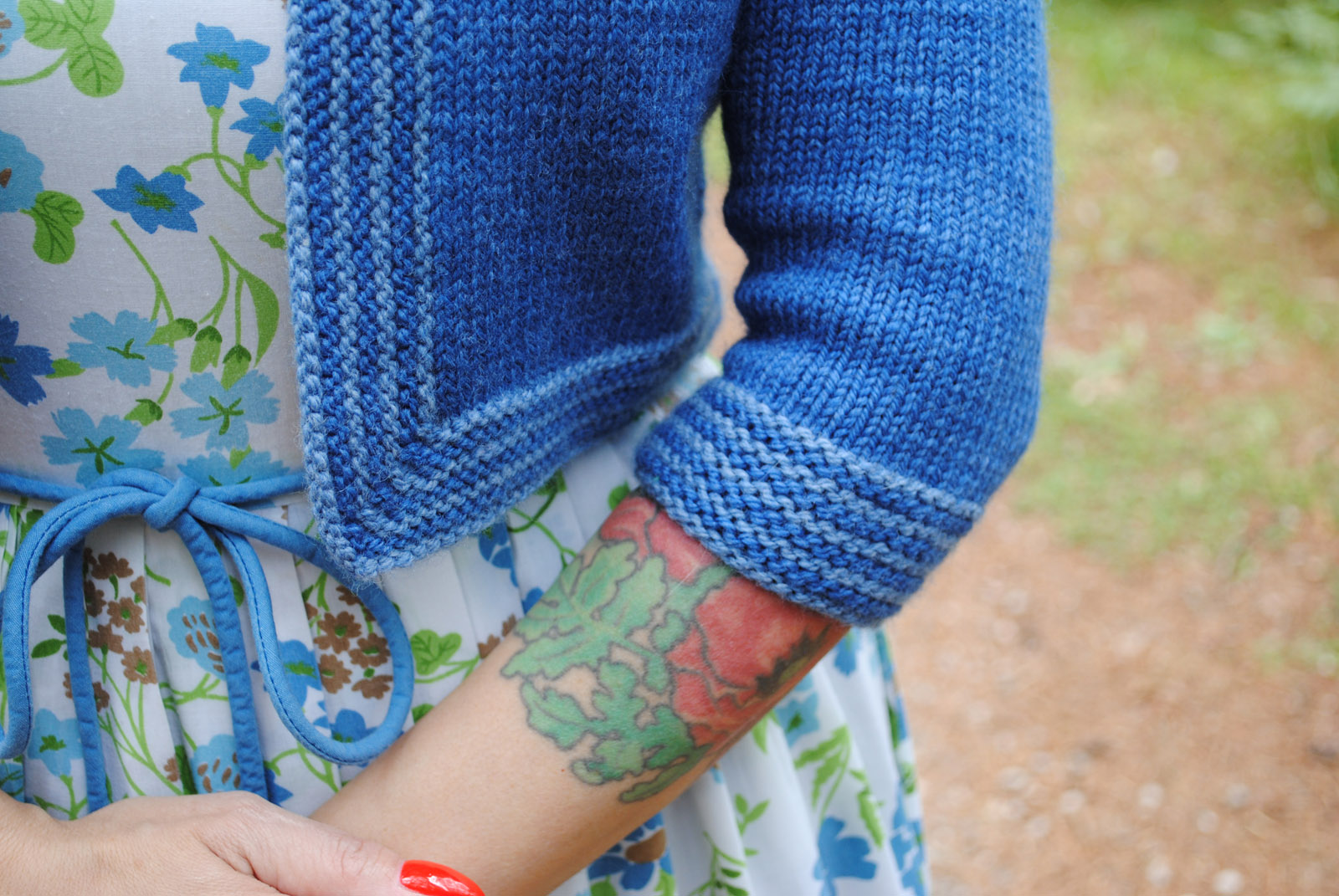
The yellow version was knit in the same yarn, but only one shade apart. I love the subtlety of this one! Knit By Numbers is a great choice for Confidette, since it’s one of the few yarns I’ve found that has a palette of coordinating shades of every color.
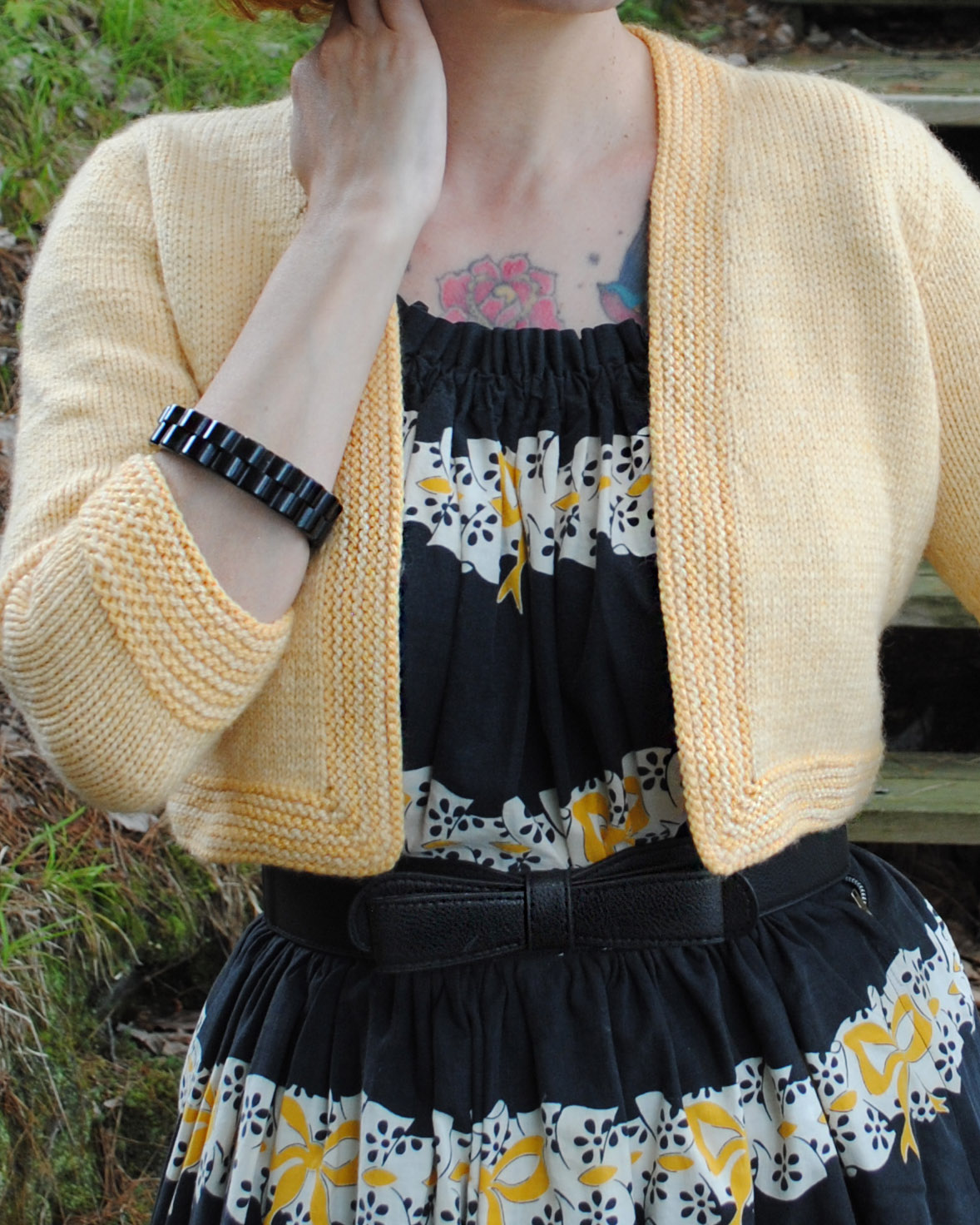
The striped border, while it takes a bit of attention as you pick up stitches and work mitered front corners, is quite easy to work, and has such a nice visual impact!
The green sample was knit in Wollmeise DK. Fun fact, the darker green contrast color was leftovers from this 1950s bolero!

The surprise icing on the cake though, is the bind off. I know, a bind off! But I’m serious.
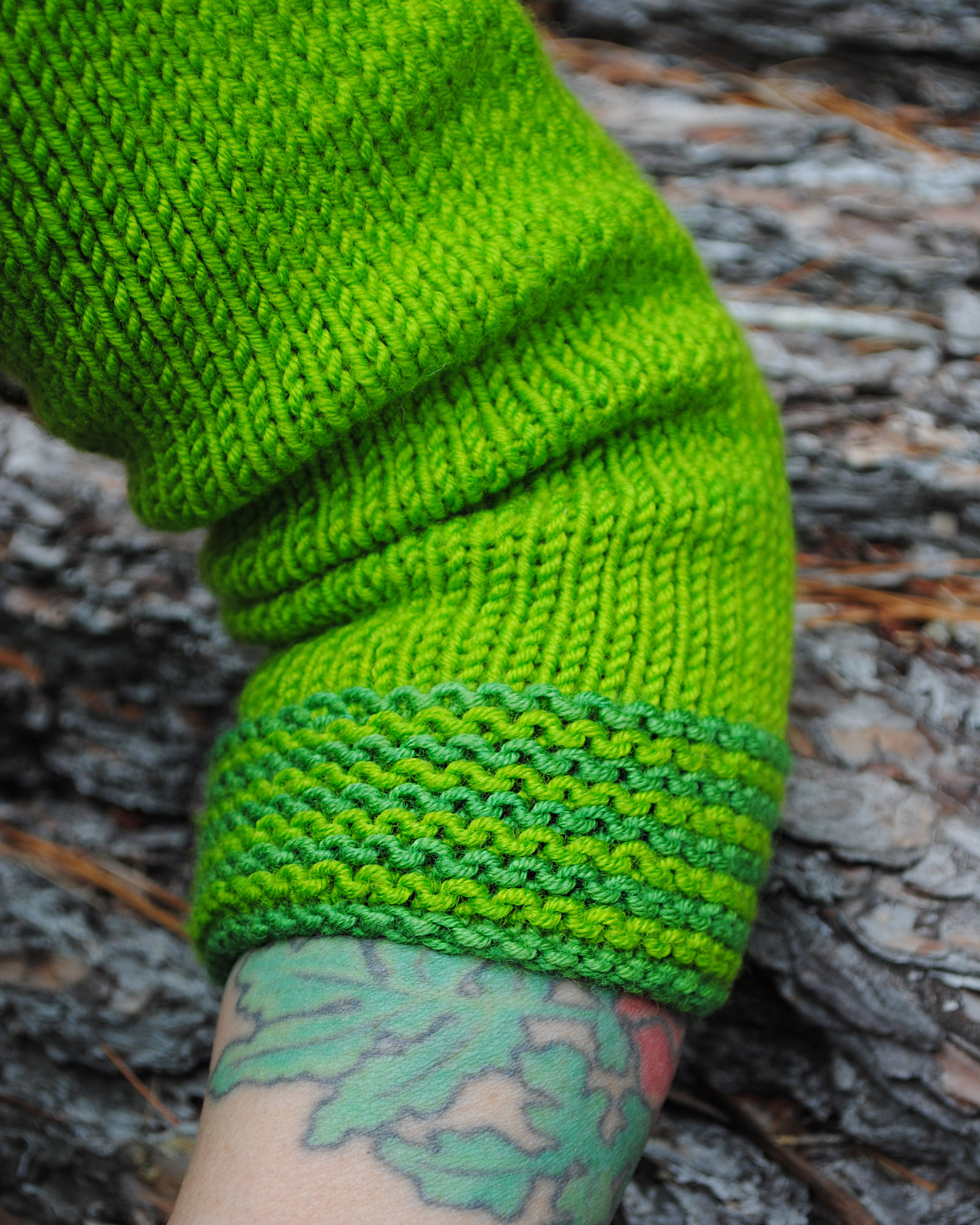
Confidette uses the Icelandic bind off method. (Ironically I visited Iceland last winter—see my Instagram stories highlight.) And it makes an absolutely perfect end to the last garter stitch stripe. As soon as I tried this bind off with the stripes, I knew it was going to be ideal. My test knitters loved it, and I think you will too!
Here’s how to work Icelandic bind off
With yarn at the back of your work, insert right needle purlwise through front loop of first stitch on the left needle, then knitwise into the front loop of second stitch on left needle. Pull the second stitch through first. Yes, it’s a bit fiddly pulling it though!
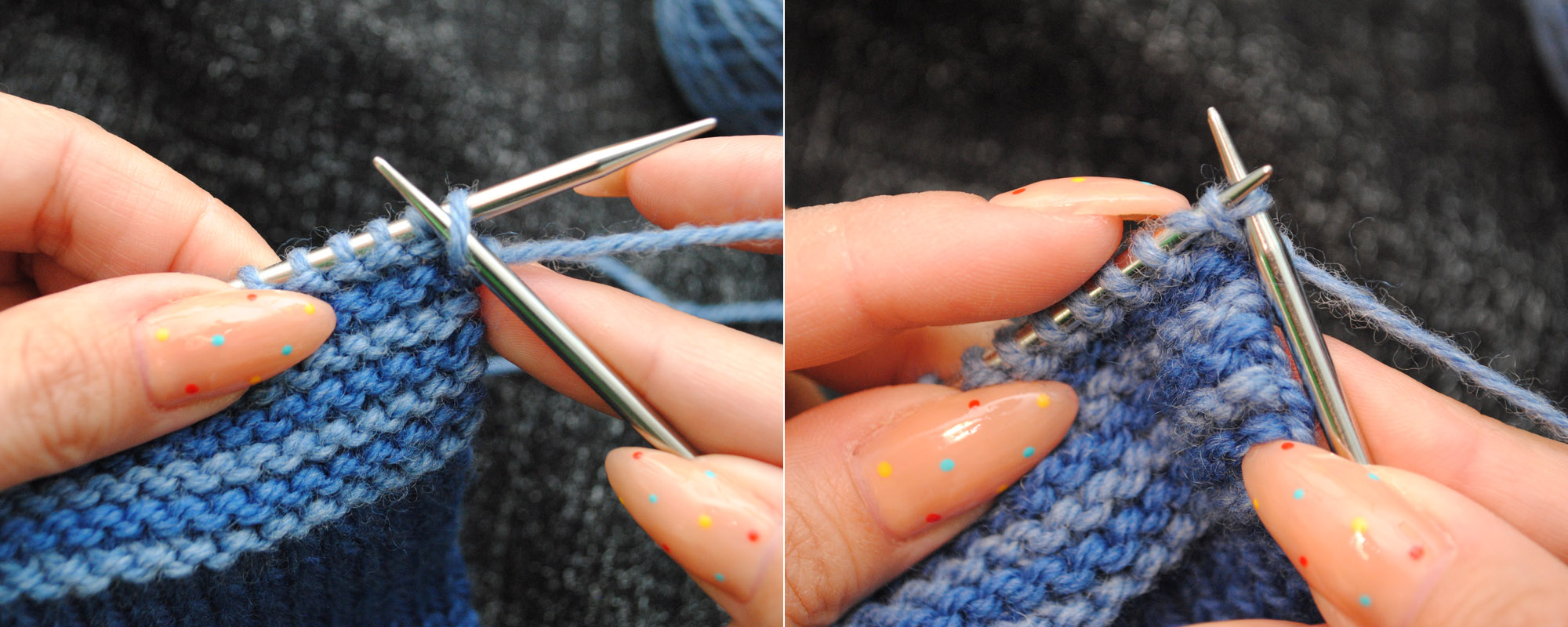
Then wrap the right needle tip and knit that stitch, and slip both stitches off left needle. (You’re knitting the second stitch that you pulled through the first stitch, then dropping both off the needle together.)
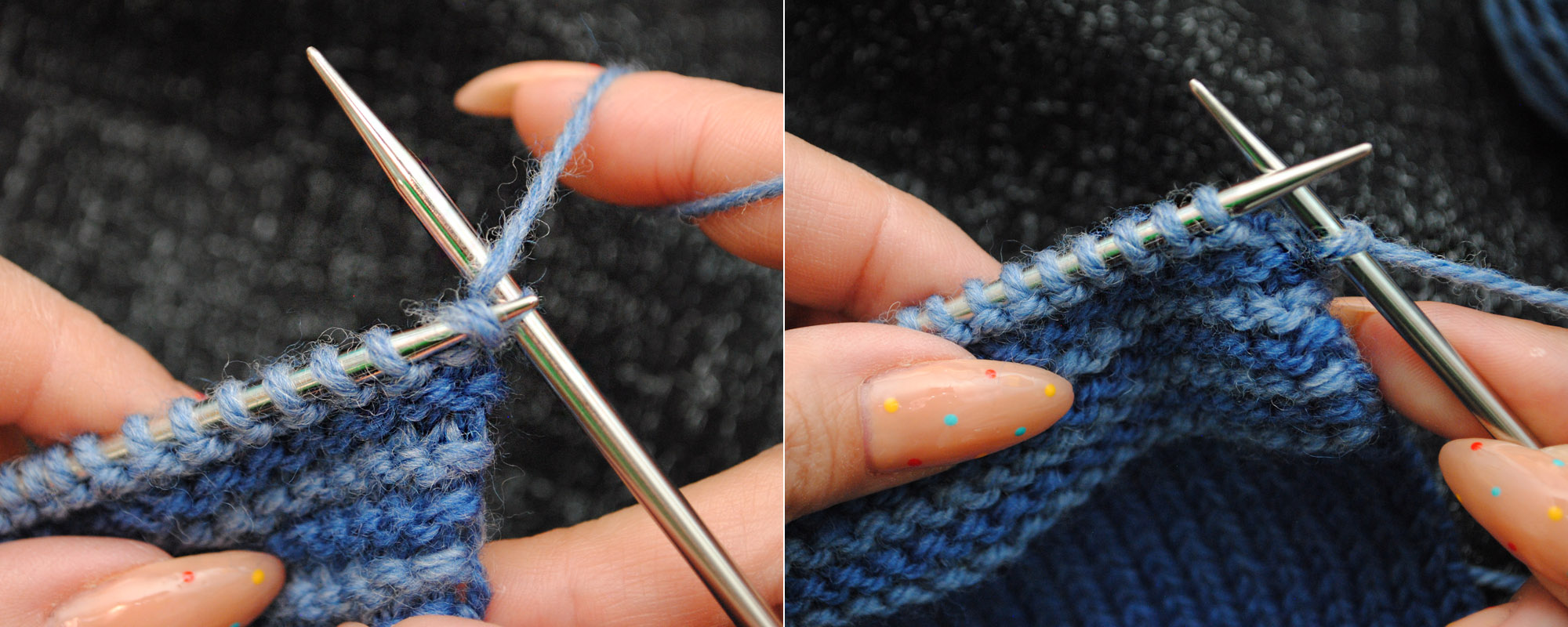
Move the new stitch back to left needle. Repeat these steps until only one stitch remains, and then break the yarn and pull the tail through the last stitch. That’s it!
I have two tips for Icelandic bind off, that I’ve learned along the way:
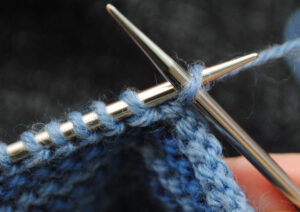 Tip one – When you move the stitch back to the left needle, if you do it purlwise with left needle at back, you’re already in position for the first step, and can immediately insert the right needle knitwise into the front loop of the second stitch on left needle. Saves a step!
Tip one – When you move the stitch back to the left needle, if you do it purlwise with left needle at back, you’re already in position for the first step, and can immediately insert the right needle knitwise into the front loop of the second stitch on left needle. Saves a step!
Tip two – Tension is key. You don’t want to knit it loosely as some other bind off methods. But if it’s too tight, it can pull in and look a little odd. Try very gently tugging the working yarn after pulling the second stitch through the first, to get a tension that perfectly matches your garter stitch.
Not gonna lie—it takes a looong time to work this bind off on the Confidette border, since it goes around the entire outside of the bolero. But it’s worth it for the clean finishing touch, and the perfect matching end to your last stripe!
Don’t want to knit a striped border? That’s okay! Icelandic bind off is a great way to end anything with garter stitch, like test knitter Tara’s handspun rainbow border. I’m in love with this one! (Find Tara on Ravelry and Instagram.)

Or try it on seed stitch, sometime! Test knitter Lianne used one of the customization suggestions in the pattern and used seed stitch for the striped border and cuffs, for a different twist. She still used Icelandic bind off, and it looks great and gives a nice distinct edge. (Find Lianne on Ravelry and Instagram.)
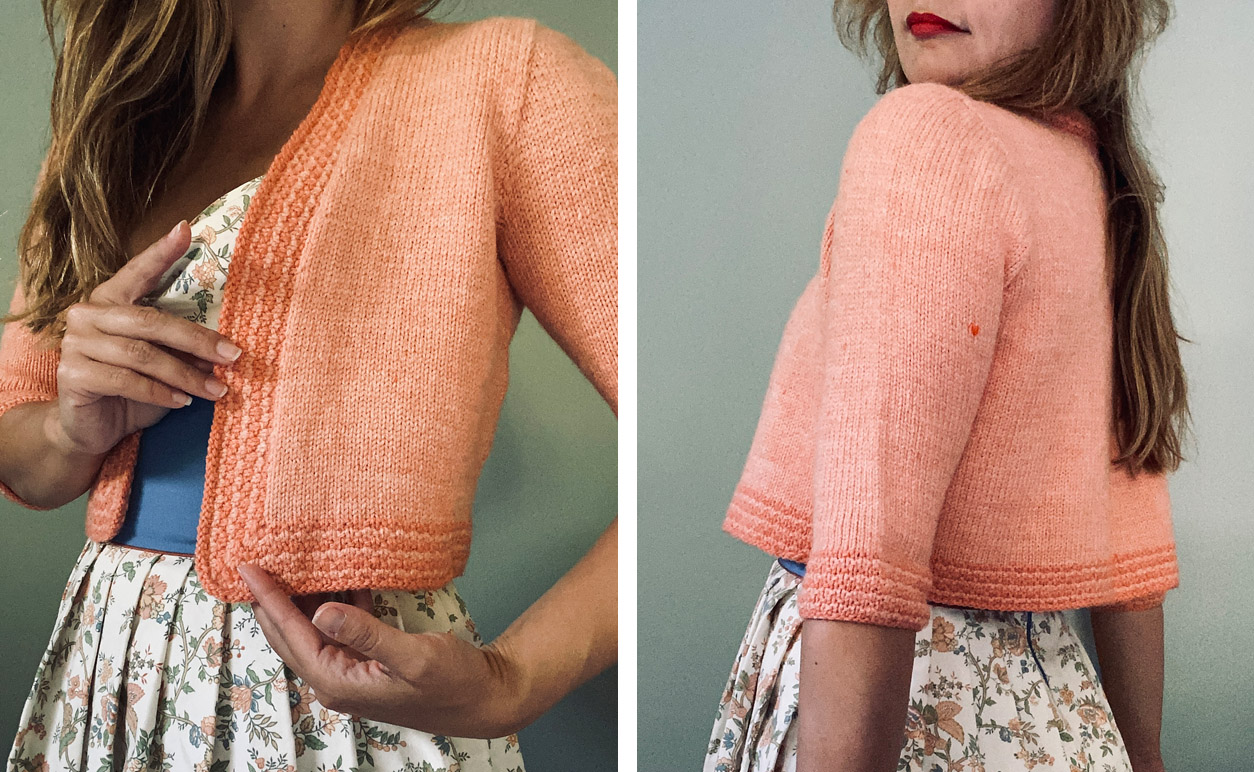
I think you’ll love Icelandic bind off paired with your Confidette border and cuffs. Give it a try!

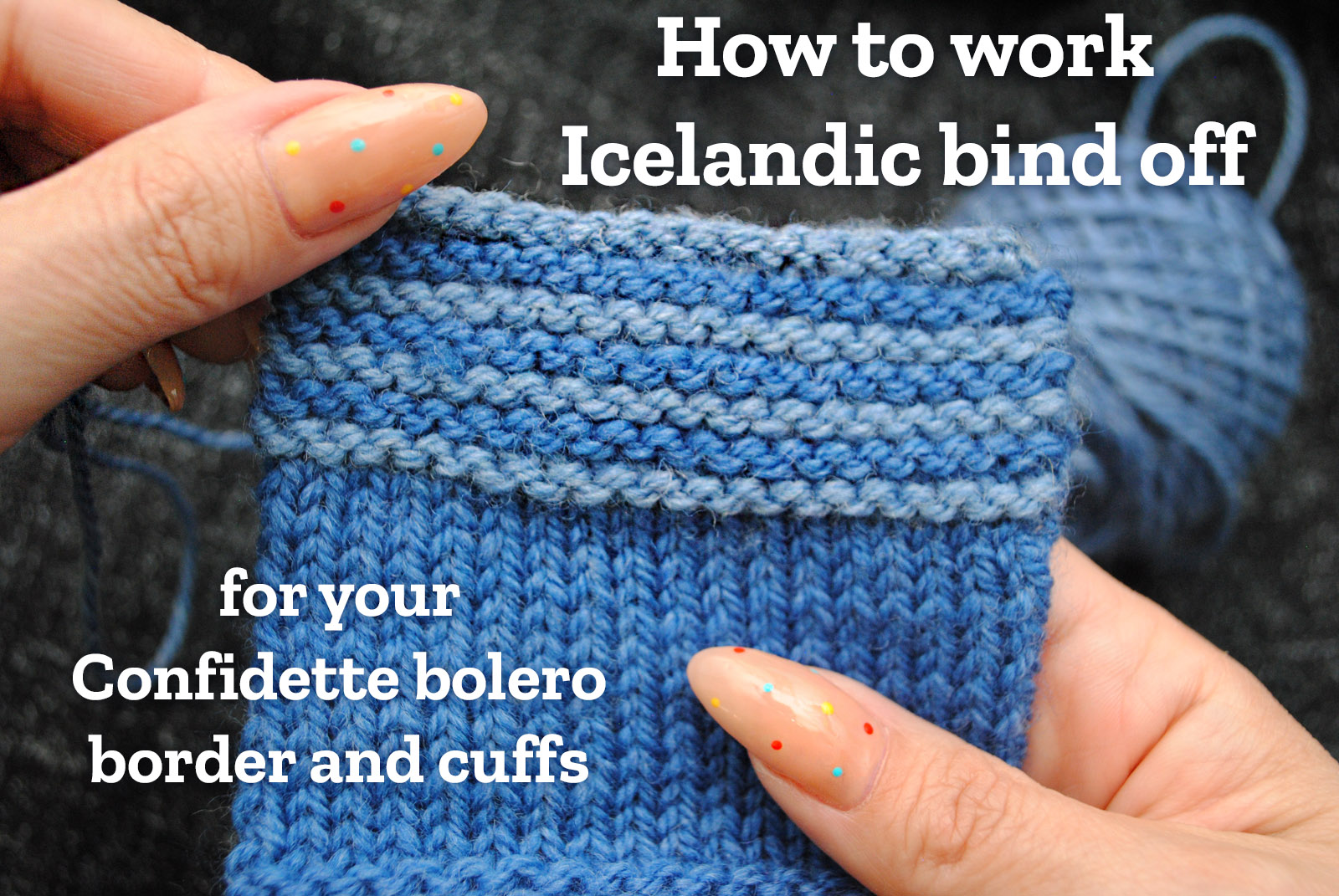
This is gorgeous! I am off to purchase the pattern to make one for my daughter for Christmas.
One gift down! Thank you. 🙂
Thanks so much, and happy knitting! I’m sure she’ll love it!
Icelandic BO is one of my favorites, especially for a garter edge but for any edge that doesn’t need a LOT of stretch. It looks similar on both sides (unlike standard BO) and, it uses virtually the same yardage as the previous row (perhaps a few tenths of a gram more, depending on tension).
I love your site and the very clear tutorials with pictures. Thank you!